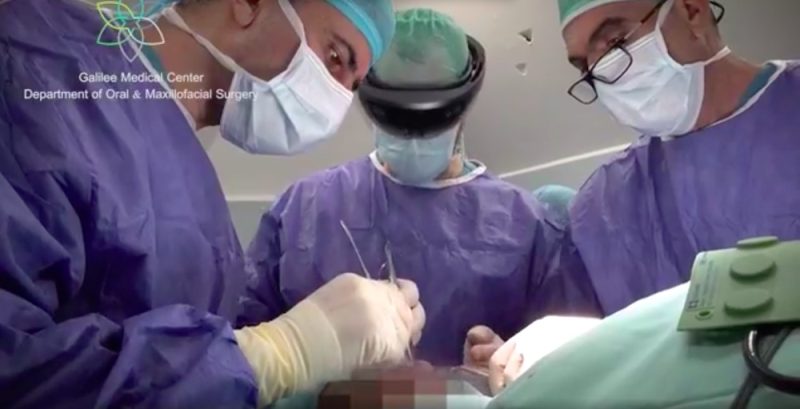Following the successful performance of the first holographically navigated spinal surgery projected directly onto the patient at Balgrist University Hospital, as we reported at the time reporteda team of Israeli doctors is speaking out: they have performed the first eye operation with the support of augmented reality (AR) technology.
It still sounds a bit like science fiction, but we'll probably soon get used to news like this: Surgery with AR and 3D printers. After the miracle in Balgrist, a 31-year-old citizen from the Galilee region who had suffered severe facial injuries was operated on: the floor of his left eye socket had fractures, resulting in double vision and aesthetic impairments.
3D printers and AR in use
Based on a CT scan, the team of doctors created a 3D model of the skull. A titanium plate was then produced using a 3D printer and inserted into the left eye socket. The undamaged right eye socket served as a model.
A Hololens was used to insert the plate correctly. The 3D model of the skull was placed digitally over the patient's head so that the match could be checked in real time.
The operation took 90 minutes and was successful. A subsequent CT scan showed that the plate had been inserted correctly. The patient was able to leave the hospital after a few days.
More AR operations planned
The operation was planned and performed by doctors from the Galilee Medical Centre and the Sheba Medical Centre in Tel Hashomer. "The innovative technology, which consisted of a 3D printer and augmented reality, led to a precise execution of the operation and a shorter operation time," the head of surgery, Prof. Samer Srouji from the Galilee Medical Centre, told the Jerusalem Post.
The hospital's department specialising in 3D technologies has been established in recent years. According to Srouji, AR technology will also be used for other types of surgery in the future.
"Augmented reality will contribute to improved clinical outcomes and reduce cases of repeated imaging and surgery," says Srouji.
Source: Mixed









